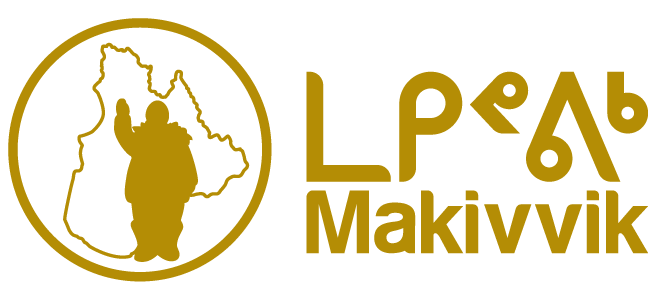By Mackenzie Martyniuk, fisheries biologist at the NRC
Over the month of September, Nunavik Research Centre staff, in cooperation with Nayumivik Landholding Corporation and Nunavik Rotors, once again collected Arctic charr eggs for the Napukaaliuvik Kuujjuaq fish hatchery. The hatchery, a project of the Nayumivik Landholding Corporation, began in 1999 with the goal of increasing fish stocks in the Nepihjee River watershed near Kuujjuaq, by introducing Arctic charr that had been raised from egg to juvenile stage at the hatchery.

Prior to 1999, the Nepihjee River watershed was inaccessible to migrating Arctic charr due to a set of impassable falls upstream of the mouth of the Nepihjee River. Given the importance of this species and the rapid growth of the local population, dynamite was used to blast through solid rock and clear two channels to create a path for fish to swim upriver. With the watershed now accessible for Arctic charr to migrate and the hatchery supplementing population numbers, Kuujjuaq families could enjoy fishing and eating this amazing species!
However, all of this would not be possible without the determination of the landholding president at the time, Allen Gordon, who received a national fisheries award in 2002 for his work at the hatchery. Gaetan Soucy has also been integral to the project, providing his expertise since the hatchery’s inception. From their efforts, along with the efforts of many others, the hatchery now supports around 40,000 – 70,000 Arctic charr eggs each year with over 500,000 fry being released into lakes and streams near Kuujjuaq between 2000 – 2007 alone!

In the past these eggs were collected from the Finger Lakes near Tasiujuaq, but are now collected from river systems near Kangiqsualujjuaq. A community representative also joins the NRC staff and assists with the collection process. Presently, there is a well-established Arctic charr population in the Nepihjee River watershed. The Napukaaliuvik fish hatchery is an excellent example of Inuit-led stewardship of wildlife resource management with Kuujjuaq families are now able to access this incredible country food year-round from a population that initially didn’t exist.
If you have any comments or concerns about fish or other aquatic resources, please do not hesitate to contact Mackenzie Martyniuk at the NRC (mmartyniuk@makivik.org or 819-964-2925 ext. 302).
Fungal disease of the fish of the Koksoak: results from summer 2022
By Géraldine Gouin, wildlife disease specialist at the NRC
Since 2022, a research project has been studying a fungal disease of salmonids in the Kuujjuaq River. This fungus is abundant in the environment, but does not generally cause health problems in fish, except when it invades an existing wound on the fish’s skin. The disease caused by this fungus is called phaeohyphomycosis.

The research project involved a few Kuujjuaq fishermen who counted their catches during the summer of 2022 and returned fish that appeared infected with the fungal disease to the Nunavik Research Centre (NRC). After examination, samples were taken and sent to the Centre québécois sur la santé des animaux sauvages for analysis. A total of 339 fish were captured for subsistence purposes, of which five were brought to the NRC and four were confirmed to have the fungal disease. In total, this makes one infected fish out of every 100 submitted. One fisherman also installed a thermograph to monitor the water temperature around his fishing area.

Some interviews have been conducted to determine when this disease began to appear in the Kuujjuaq River, and further interviews will take place in the spring. Another use of the interviews is to highlight the risk factors that make salmonids in the Kuujjuaq River positive for this disease.
The first summer of this project was a success. Although the number of infected fish is relatively low, the interviews that were done so far really highlighted the increasing number of affected fishes noticed by the fishermen in the last couple of years.
That is why more fishermen have been recruited during the summer of 2023, and we’ll share new results as soon as we have them! If you observe these type of wounds yourself, you can always submit these fish to the Nunavik Research Centre.
If you have any concerns, comments or would like to participate in this study, please do not hesitate to contact Géraldine-G. Gouin (ggouin@makivik.org). Any worries about wildlife health? Don’t hesitate to share it with the NRC team!
819-964-2925
P.O. Box 179, Kuujjuaq, Québec J0M 1C0




